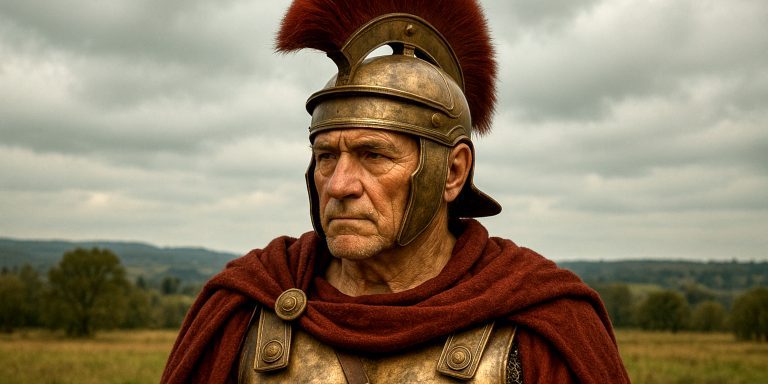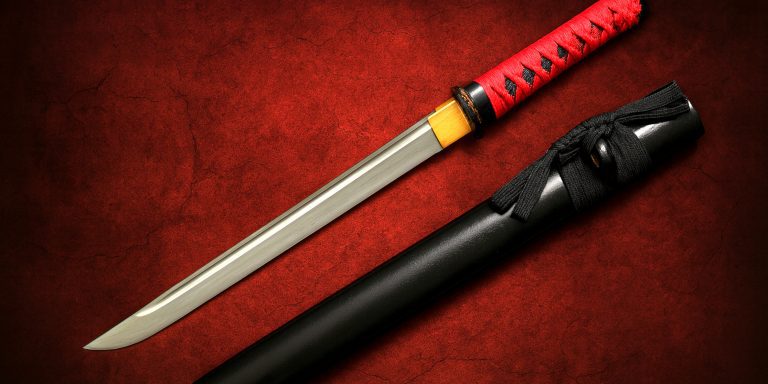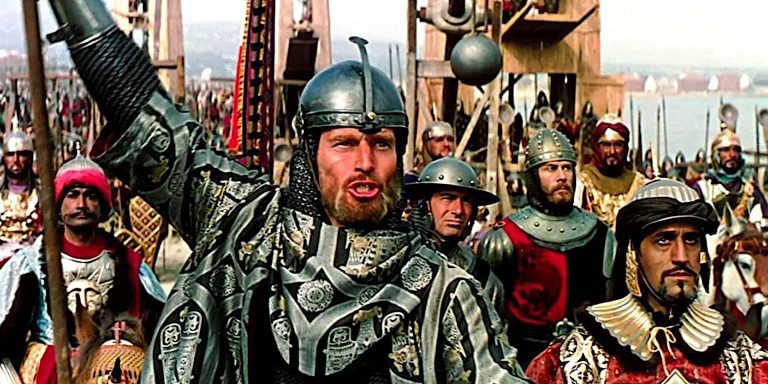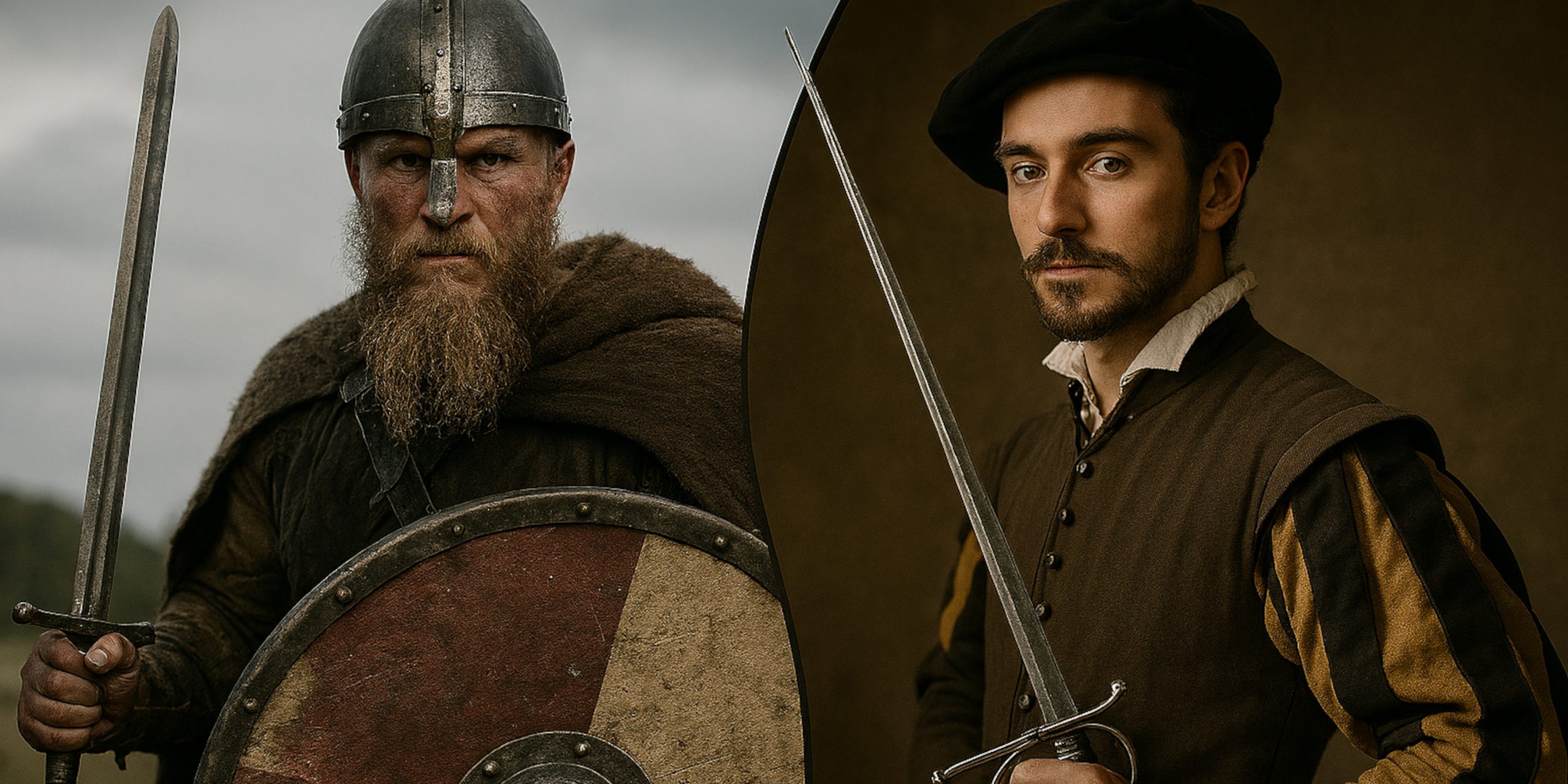
European swordsmanship did not emerge in isolation, nor did it develop in a straight line. Across centuries, sword fighting evolved alongside social structures, battlefield tactics, metallurgy, and the written tradition of martial instruction. What began as brutal, close-quarters warfare in the Viking Age gradually matured into refined martial arts, supported by treatises and guilds during the Renaissance. This article charts that transformation, tracing the martial techniques, tools, and philosophies that defined each era.
Viking Age Combat (8th to 11th Century)

Viking warriors fought with swords that were heavy, single-handed, and designed for slashing. The spatha-derived Viking sword, often pattern-welded and richly decorated, was used in conjunction with a round shield. Swordsmanship during this time was practical and aggressive. Combat relied heavily on physical strength, shield manipulation, and quick, committed strikes.
While little written evidence survives, the sagas and archaeological finds suggest that Viking fighters trained extensively and viewed combat skill as a core component of honour and status. Fighting was not limited to the battlefield. Duels, known as holmgangs, were a legal way to resolve disputes and provided a structured environment for showcasing martial prowess.
Medieval Swordplay and the Rise of the Longsword (12th to 14th Century)

As mail gave way to plate and warfare became more structured, sword design changed to meet new challenges. The arming sword and later the longsword emerged as dominant forms. The latter was notable for its two-handed grip, straight double-edged blade, and versatility. Swordsmanship adapted accordingly.
The 13th and 14th centuries saw the birth of formal martial instruction. Fechtbücher (fighting books) began to appear in German-speaking regions. These texts laid out principles of timing, leverage, and control. One of the most influential early masters was Johannes Liechtenauer, whose verses codified a complete system of longsword combat, including thrusts, counters, grappling, and armoured fighting.
Italian schools also flourished. Fiore dei Liberi’s Fior di Battaglia, written in the early 1400s, presented a detailed martial system not only for swords but also for daggers, polearms, and mounted combat. His emphasis on technique over strength, and adaptability in different combat scenarios, marks a pivotal moment in the evolution of European martial arts.
The Late Medieval and Early Renaissance Period (15th to early 16th Century)
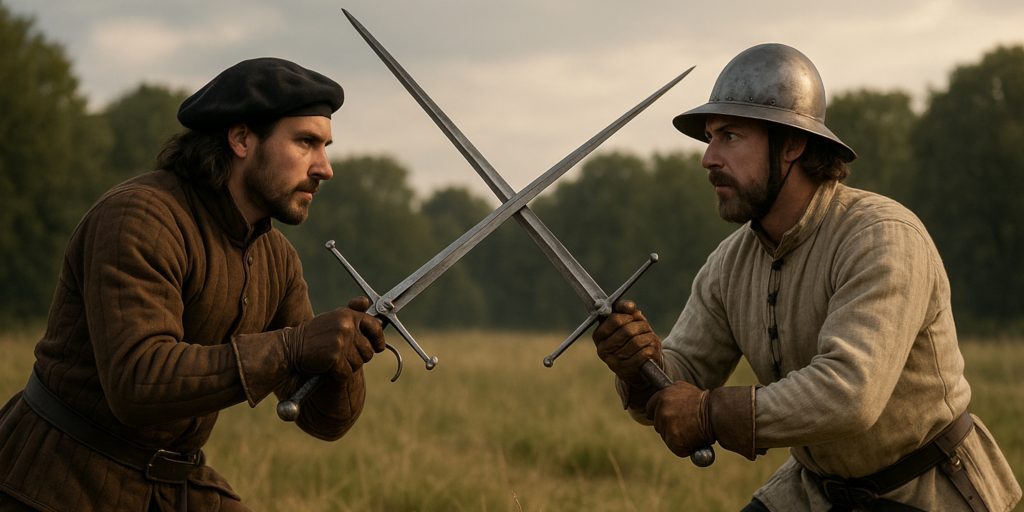
By the late 15th century, fencing began to shed its battlefield origins and shift toward civilian and judicial combat. The longsword remained central, but weapons such as the sidesword and the rapier emerged in urban contexts where duelling and personal defence took precedence over military application.
During this time, combat treatises grew more detailed and diverse. In Germany, Peter Falkner and Paulus Kal took Liechtenauer’s principles further. In Italy, Filippo Vadi and later Achille Marozzo brought new perspectives, blending knightly tradition with the requirements of urban self-defence.
Importantly, this period saw fencing start to separate into distinct schools with regional differences. The Italian masters emphasised form and elegance, while the German traditions maintained a focus on adaptability and raw control. Yet both shared an understanding of timing, distance, and technique that would influence generations of swordsmen.
The Renaissance and the Age of the Rapier (16th to 17th Century)
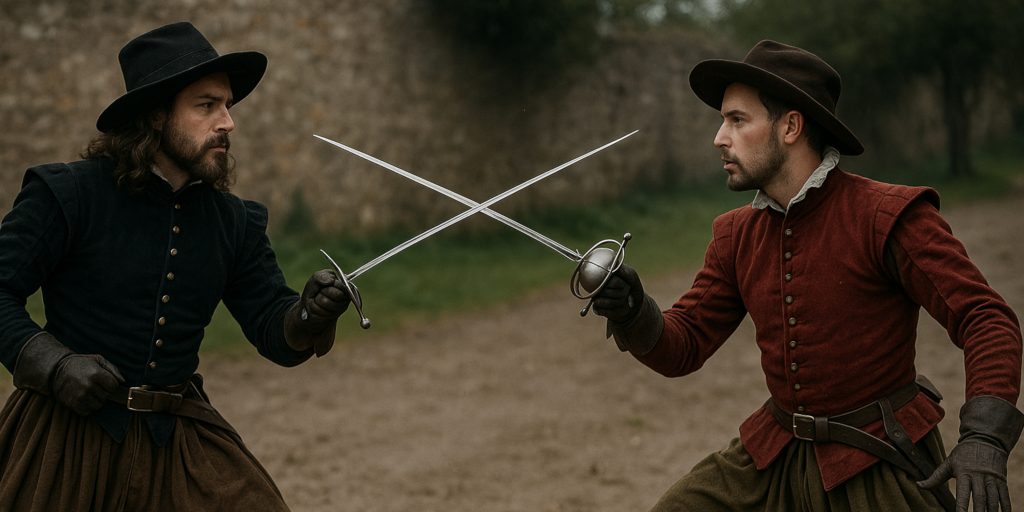
The Renaissance brought a profound change in how Europeans thought about combat. The rapier, a long, slender thrusting weapon, became the symbol of civilian fencing. It was not a battlefield tool but rather a weapon of status, duel, and self-defence.
This shift coincided with the emergence of fencing as an intellectual discipline. Treatises such as those by Ridolfo Capo Ferro, Salvator Fabris, and Giacomo di Grassi emphasised geometry, psychology, and posture. These masters created sophisticated systems with precise movements and counters. Swordsmanship became part of the education of the upper classes, taught in academies and often tied to ideals of honour and rhetoric.
The German tradition also adapted, with Joachim Meyer’s Gründtliche Beschreibung der Kunst des Fechtens blending older techniques with the newer civilian forms. Meyer presented fencing as both a practical and recreational art, using the longsword, dussack, rapier, and polearms.
The Seven Swords Takeaway
From Viking-age duels on icy shores to Renaissance salons filled with noblemen crossing rapiers, European swordsmanship transformed dramatically over the centuries. The journey was shaped by necessity, social change, and an increasing desire to codify and preserve martial knowledge. What remained constant was the belief that mastery of the sword required not just physical ability but also discipline, judgement, and understanding.
The surviving manuscripts, illustrations, and fencing guild records form a legacy of craft and combat. They remind us that European martial arts were not simply brutal contests, but carefully studied disciplines with their own philosophies, lineages, and enduring appeal.

